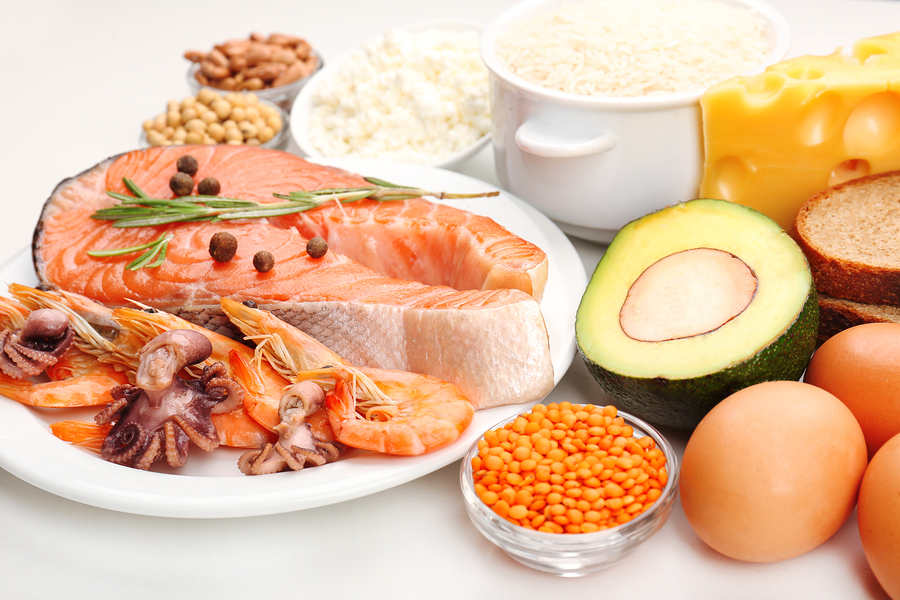- Make It Yourself Lavender Heart-Shaped Bath Bombs!
- 20 Things You Never Knew About “Down There”
- 12 Best Foods For Those Suffering From Arthritis Pain
- 12 Personal Hygiene Mistakes Almost Everyone Makes (Mom Never Told You About #4!)
- 15 Medicinal Plants And Herbs From The Cherokee People
- 12 Mind-Blowing Benefits Of Drinking Coconut Water During Pregnancy
- 12 Outstanding Winter Foods That Won’t Fatten You Up Like A Christmas Turkey
Osteoporosis On The Rise: 10 Top Advices Explained To Treat It Naturally
When you think of osteoporosis you automatically think of older women. While almost half of the people who have osteoporosis are women over 60 years of age, 30% are men. Half of the men who get diagnosed with osteoporosis have fractured their hip. More than 30% of those men will end up passing away during the first year.
What has caused this increase in this devastating illness? Osteoporosis is a major disease right now, but ten years back it was hardly even mentioned. It appears that our lifestyle and eating habits have changed dramatically over the last years, compiling for the reasons for the osteoporosis epidemic. Here we enlist and explain what you can do to prevent and treat osteoporosis.
1. Take the right kind of calcium.
Though calcium is involved in heart function, blood clotting, and nerve transmission, in the first place it helps build and maintain healthy bones. In fact, 99% of the body’s calcium is found in bones. Insufficient level of this mineral causes many different bone-affecting diseases, including osteoporosis.
Dairy products are normally associated with high calcium levels and are usually advised in such cases. However, certain non-dairy foods could be a good source of this mineral. For instance, one cup of almonds (around 150g) contains and delivers similar quantity of calcium as one cup of yogurt. Other options include, but are not limited to, cooked turnip greens, boiled soybeans, sardines, and broccoli.
To improve and enhance calcium absorption, try controling the health of your stomach acid and vitamin D intake level. Remember, that there are things which inhibit proper calcium absorption in the body. For instance, phytates (found in certain grains, nuts, and seeds) and oxalates (found in spinach, sweet potatoes, rhubarb, and beetroot) interfere with calcium storage in cells and bind to it before this mineral is absorbed in the body. It is best to try to avoid eating phytate, oxalate, and calcium-rich foods simultaneously in one meal.
Continue to Page 2
2. Make sure you have enough vitamin D.
80-90% of vitamin D comes with the exposure from the sun, so the majority of people have access to free doses just about any sunny day. However, many Americans don’t even know they are suffering from its shortage. Prevalence of vitamin D deficiency in US adults was close to 40% in the recent years.
Vitamin D helps your body absorb calcium, especially in the small intestine, directs it to the bones, and stops its loss through urine. So, effects of vitamin D on calcium levels and bones health cannot be overestimated. It is able to bring fractures you get down as effectively as a prescribed medication. It also helps with disorders of the autoimmune system, depression, and the modulation of the immune system.
If you are unable to get out in the sun on a regular basis to enjoy a sufficient dose of vitamin D naturally, you can find this mineral in small amounts in a few foods, including egg yolks, cooked beef liver, certain mushrooms, flash of fatty fish, and some cheeses. To make vitamin D more available, it is made in laboratories and added to (or, as they say, fortify with it) dairy products, cereals, and juices.
READ MORE: Vitamin D And Cancer Risk
Continue to Page 3
3. Cut down on the stress in your life.
The relation between stress and osteoporosis is very tricky. Firstly, stress imposes a number of physiological changes. Stress increases cortisol levels. When the cortisol runs high for a long time it could be the reason for bone loss. Cortisol aggravates insulin, which will leave you with insulin resistance. The blood sugars in your body will increase and you will lose calcium in your urine. Just 25 teaspoons of sugar can result in a loss of calcium in your urine.
Secondly, stress leads to distortion of behavioral patterns, from eating and drinking, to exercising and sleeping habits, which all can lead to osteoporosis. And lastly, early appearance of osteoporosis signs brings on depression and isolation which leads to more stress.
In order to get stress out of your life, (and stop this vicious circle), try mediation, get a massage, sleep well, and do not skip your vacation!
RELATED: 6 Scary Facts About Stress Infographic
Continue to Page 4
4. Stop drinking carbonated beverages.
One of the main things you can do to reverse osteoporosis is to cut out anything that is carbonated. This includes not only regular and diet soft drinks, but sparkling bottled water and champagne.
A clinical study was conducted on women from the ages of 16 to 20 years. The results led to that more than half of them showed beginning stages of bone loss. Carbonated drinks contain phosphates which limit the ability of the body to use calcium which is vital minerals for the bones.
Continue to Page 5
5. Mind your proteins.
Besides having adequate supplies of both, calcium and vitamin D, dietary proteins stand out as another vital nutrient for bone health, playing the vital function in the prevention of osteoporosis as well. However, protein has been identified as being both damaging and beneficial to bone health depending on a variety of factors (including the level of protein in the diet, source of protein, calcium levels, etc). To put it another way, it looks wise and reasonable to avoid diets with very high protein (ex. more than 2.0 g per kilo of the body weight per day) in case of law calcium intake (ex. less than 600 mg per day). It is always a special concern to public health professionals to get the right balance for proteins intake between too much and too little here.
But a number of scientists, including P.Bonjour from the University Hospitals and Faculty of Medicine, Geneva, agree that the recommended dosage allowance, as set at 0.8 g/kg body weight/day, might be too low for prevention, especially in the elderly.
Continue to Page 6
6. Increase your exercise level.
Whenever you exercise, it stimulates your bones letting them know that your body needs them. All you have to do is to stay active 15 to 30 minutes every day to increase the density of your bones. Weight-bearing exercises using weights that are just around 2 to 5 pounds each will help to do the job. You can also incorporate hiking, walking, or climbing the stairs into your exercise program.
RELATED: The Easiest Exercise Ever For Melting Off Belly Fat!
Continue to Page 7
7. Avoid alcohol.
Firstly, alcohol is a very diuretic substance so the chances that you flush out your calcium with just one more glass of whiskey is very high. It also affects hormone balance which also decreases calcium levels. Besides, alcohol interferes with the wok of the kidneys and liver, slowing down vitamin D activation.
8. Maintain the right hormone levels.
Your bones will be maintained if your hormone levels are balanced. Common indicators of incorrect hormone levels are a decrease in estrogen for women and decrease in testosterone for men. Both of these will lead to certain bone loss. You must also make sure that your insulin, parathyroid, and cortisol levels are in check.
Continue to Page 8
9. Lower the amount of caffeine you consume.
Every time you drink a cup of coffee you eliminate 150 mg of calcium through your urine. Switching to decaffeinated coffee won’t improve the situation because it has a bunch of chemicals that are harmful and get in the way of the process used to detoxify the coffee. If you can’t go without your cup of coffee every day you will need to make sure to increase the amount of calcium you take for each cup of coffee you drink.
10. Keep an eye on the acid levels in your stomach.
Many people take medications to block the acids in their stomach. They are used to treat hiatal hernias as well as heartburn. But when you block stomach acids you raise the risk of getting osteoporosis.
References:









































